The Pemini Organisation on Blu-ray from Indicator
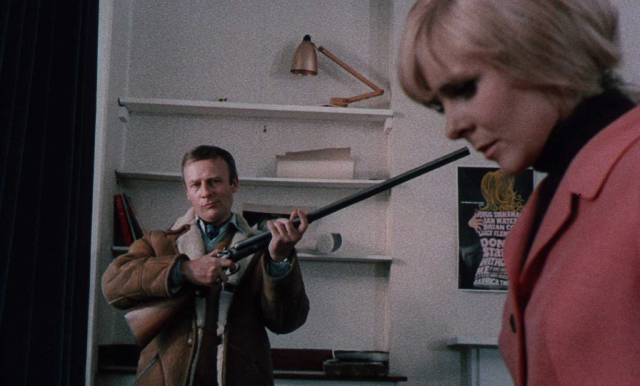
With a recent two-disk set, Indicator have unearthed another odd corner of British cinema history. At the end of the 1960s three friends launched a production company with a great deal of ambition and very little experience. In their early twenties and just emerging from film school, they decided to make features and forged ahead. Michael Sloan would write the scripts, Peter Crane would direct and Nigel Hodgson would help manage the business, their first names providing the company name – The Pemini Organisation. Hodgson departed fairly early for a business career and David M. Jackson joined on their second project, providing the financial know-how which kept Pemini afloat for several years.
Sloan, an American living in England, was a fast, prolific writer who had a new script ready each time a project was being completed. He eventually returned to the States and a long career as a writer-producer for television (among many other things, he created the series The Equalizer [1985-89]). Crane eventually left England too as it became increasingly difficult to get productions off the ground through the ’70s; thanks in part to Sloan, he also built a career in television.
Being young and ambitious, without a particularly realistic understanding of the business, the team seemed blessed. Through connections and fortuitous encounters, they ended up with experienced actors who were willing to work for very little and talented crew members who would give each project a professional gloss which belied the very small budgets.
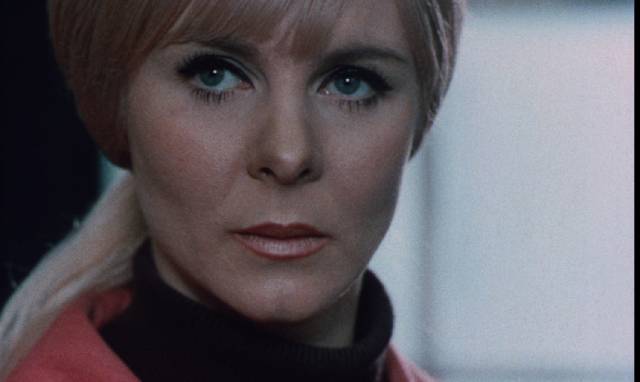
Hunted (1972)
Their first project is obviously tailored to their limited resources (they began with just £1000) – two characters in a single room – but despite the seeming simplicity, Sloan’s script presented Crane with serious directorial challenges; although only forty-two minutes long (which itself presented marketing problems), Crane had to find ways to prevent the film from becoming static, little more than a one-act play. In this, he was aided enormously by the casting of Edward Woodward, fresh off five years starring in the successful espionage series Callan (1967-72) and about to embark on a feature career with the following year’s The Wicker Man (1973), and familiar TV and film actor June Ritchie, both of whom give intense, committed performances.
Woodward is John Drummond, a somewhat agitated man who wants to rent an office from estate agent Margaret Lord (Ritchie). As she shows him the small space with windows overlooking the high street, she begins to realize that something is wrong. Tension escalates as he tells her that he only needs the space for a couple of hours, then locks the door and opens his bag to reveal a shotgun. His plan is to wait until the street fills with the lunchtime crowd and then start shooting.
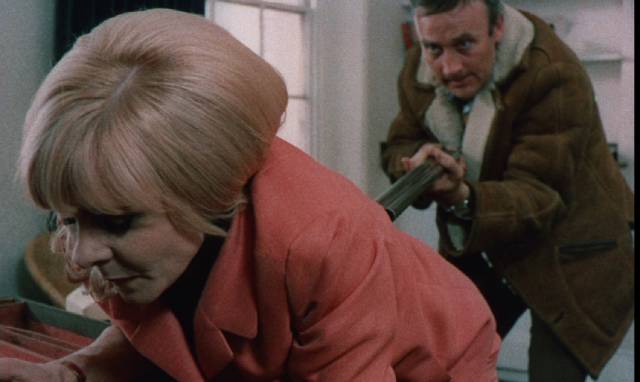
Margaret keeps him talking, gradually learning that he’s grieving the loss of his wife and child in an accident and that his plan is to provoke the police into killing him. Their conversation ebbs and flows as she tries to dissuade him and also find a way to escape the locked room. In this pressure cooker, it’s difficult to make any genuine human contact and things move inexorably towards a grim ending. There’s no denying that Hunted has the feel of a calling card, something conceived to prove that the filmmakers have what it takes, but Woodward and Ritchie invest it with some genuine emotional heft. Given that Crane was just twenty-three and Sloan twenty-five, both working on their first dramatic feature, it’s an impressive piece of work.
Luck continued to shine on the team as the film was picked up by Columbia/Warner Brothers for distribution in the U.K., though release was delayed because the British Board of Film Censors initially refused a certificate, fearing that Drummond’s plan might inspire copycats. Eventually, with the distributor intervening, Hunted was given an X and released the following year as the supporting feature for Ernest Lehman’s Portnoy’s Complaint (1972). By then, the team were already onto their first full-length feature following the replacement of Nigel Hodgson with businessman David M. Jackson, who brought much-needed cash into the venture.
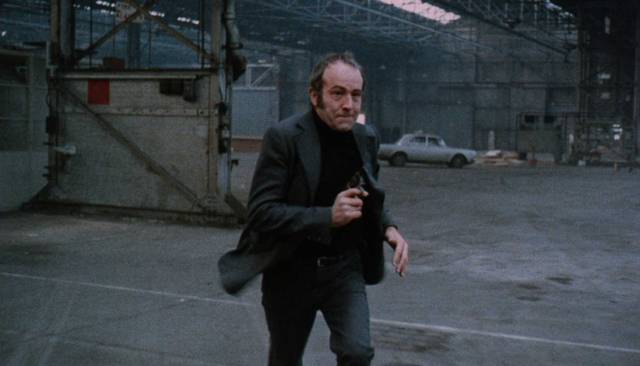
Assassin (1973)
Despite another absurdly small budget, Assassin (1973) was made on a considerably larger scale, both in terms of locations and number of characters. Once again, the team managed to put together an impressive cast headed by Ian Hendry, a distinctive talent with extensive credits in features and television, who anchors the film in a downbeat melancholy which draws on the de-glamorized world of John LeCarre’s spies and points towards the bleak paranoia of ’70s thrillers. He’s ably supported by some familiar British character actors – Edward Judd, Ray Brooks, Frank Windsor, Verna Harvey – though, being a severe alcoholic, he presented Crane with serious difficulties during production, given the limited resources and tight schedule which allowed for very little room to manoeuvre.
Hendry is an unnamed operative working for a shady government department. He seems to be losing his taste for wet work and is none too happy to be given yet another assignment by Control (Edward Judd), a bureaucrat with no patience for anyone’s pangs of conscience. The job is to kill a man suspected of stealing secrets and it has to be done quickly, with little preparation time and no effort to make the death look accidental. The target is Stacy (Windsor), who’s not particularly ambitious and doesn’t care that his assistant Craig (Brooks) is vying to get ahead at his expense. The hit is scheduled to take place at Craig’s upcoming wedding, for which Stacy will be best man.
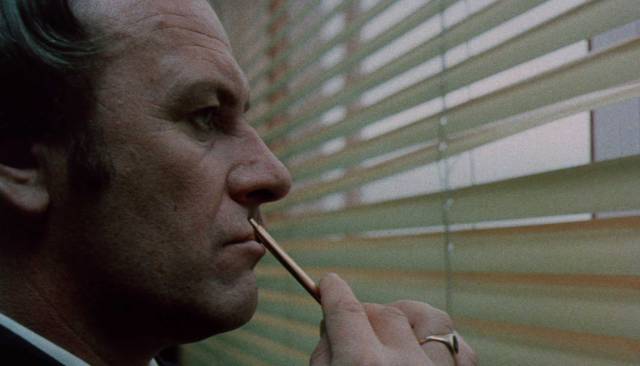
The Assassin gathers what he needs – weapon and information – killing time by picking up a young woman (Harvey) at a bar and spending the night with her, becoming hostile when she seems to invest more meaning in the encounter than he does. Unknown to him, Control has assigned a back-up man just to make sure the job gets done … and with only hours to go, Control’s bosses call to say that they have tagged the wrong target and the job has to be called off. With no way to contact the Assassin, Control sends two more operatives to intercept and “neutralize” him. Because of the bureaucracy’s sloppy incompetence a number of lives are wasted with nothing useful accomplished.
Assassin has an air of dour fatalism akin to movies like The Spy Who Came in from the Cold (1965), with Hendry’s character weighed down by the weariness which comes from no longer believing in what he does (like Richard Burton’s Alec Leamas in Martin Ritt’s movie). There’s no longer any sense of purpose, just characters caught up in the machinery set in motion by Cold War antagonisms which no longer seem to have any intrinsic meaning.
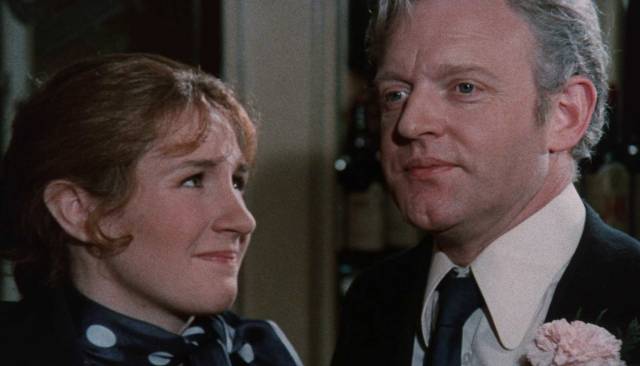
Crane again shows his ability to work with actors, but here adds effective action scenes and an ability to manage the longer, more complex narrative. There’s a sense of inertia to Sloan’s script, rooted in the story’s themes, but Crane paces the action well. It’s an impressive advance over the chamber drama of Hunted. Pemini again sold distribution to Columbia/Warner Brothers, working to finish the film in early 1973. Hunted went into release in February that year and the company began shooting their third project later that month. For a neophyte company formed by young people just out of film school, this rapid schedule of productions seems absurdly implausible, particularly as the third project was under way before there was any indication of the box office potential of the first two films.
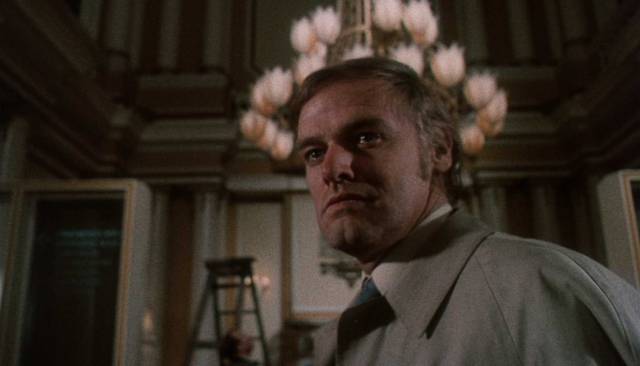
Moments (1974)
Their third feature is essentially another chamber piece, though on a larger scale than Hunted. Once again, Sloan came up with a two-character psychological drama centred on grief. An aura of death hangs over Moments (1974), which begins with a boy running along the edge of a high cliff and colliding precariously with a girl, their mutual momentum seeming to threaten a fatal fall. From this jarring moment, the film jumps ahead years and the now-adult Peter Samuelson (Keith Michell) arrives at an elegant seaside hotel. He seems distracted and we quickly discover that he’s haunted by childhood memories. Checking in, he recognizes the old man at the desk as Mr. Fleming (Bill Fraser), who had carried the family’s bags when Peter stayed at the hotel as a boy.
It’s off-season and the hotel is almost deserted, Peter’s memory intermittently populating it with his parents and the sister he had played with back then on the cliffs. Up in his room, he takes a group of objects from his case – photos and items whose meaning is not immediately apparent. Lastly, he unwraps a revolver. Sitting at the window, he looks out at the deserted shore, then raises the gun to his forehead, preparing to pull the trigger. But a sudden hammering at the door makes him hesitate. Despite calling out to be left alone, the knocking is insistent and he finally puts the gun away and opens the door.
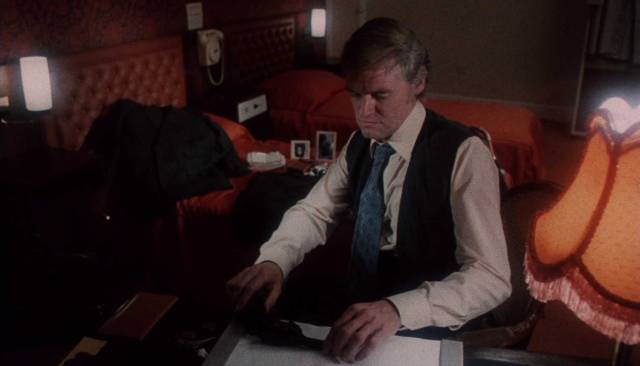
A young woman breezes in, asking for matches to light the gas in her room. Peter tries to get rid of her, but she overwhelms him and he follows her back to her room. Over the next day or so, Chrissy Hunter (Angharad Rees) seems to take control, her effusive energy pushing against his ennui. She, and we, learn that (like Drummond in Hunted) he has recently lost his wife and child and has returned to this place where he was once happy in order to end his own life; Chrissy’s vibrant embrace of life offers an alternative to his despair and for a while he rediscovers the pleasures of childhood by the sea.
I sensed something a bit off about Chrissy – she seems slightly unreal, an idealized projection of male desire – which finally comes into focus in the final moments as the story circles back to Peter at the window with the gun. Although more ambitious, Moments seems more contrived than Hunted and Michell’s tamped-down performance resists full engagement, while Rees pushes the free-spirit energy a bit too hard … which is to say, that of the three Pemini movies, I preferred the other two more.
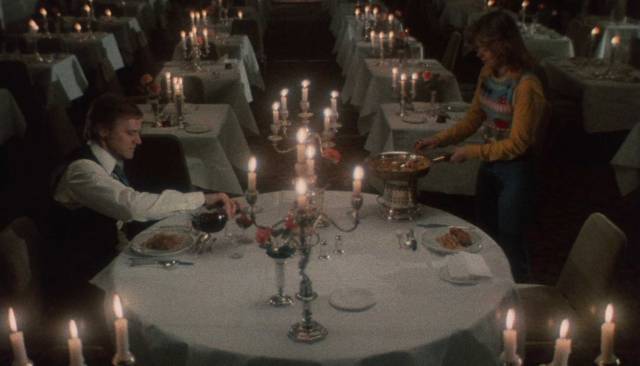
But despite reservations about the script and performances, Crane’s use of location is impressive – the cliffs at Eastbourne have a primal quality while the Grand Hotel is imposing, evoking a sense of history which clings to the present (reminiscent of The Shining’s Overlook and the Thermae Palace Hotel in Daughters of Darkness). While the first two films were effectively shot by Brian Jonson, for Moments – Pemini’s first union shoot – the great Wolfgang Suschitzky was hired, his extensive experience in documentary giving the film a finely observed texture, as well as a few ambitious shots which give the production a greater sense of scale (that clifftop opening, some tracking shots inside the hotel, and a final striking helicopter shot).
Moments proved to be the end for Pemini. It went into release in support of Francis Ford Coppola’s The Conversation (1974) the same week that the IRA began its mainland bombing campaign by blowing up two pubs in Birmingham. Suddenly, people were avoiding public places like movie theatres and, despite good reviews, the film failed to gain traction. Although the company continued to exist for a while, there were no more productions and the team members eventually went off in separate directions.
*
Indicator have invested a great deal of work into restoring all three films. Original elements have been lost, so all three were scanned from distribution prints which had sustained a lot of damage, including missing frames. In addition to all the clean-up and repairs, the missing pieces had to be sourced from old SD tape masters, causing momentary drops in quality … but overall, all three films look very good in terms of colour and contrast and fine detail. The three films are contained on two disks along with six hours of extras plus three commentaries – too much material to list in detail, but suffice to say that the set and the accompanying booklet of Crane’s reminiscences provide a complete history of this anomalous company and its productions.
*
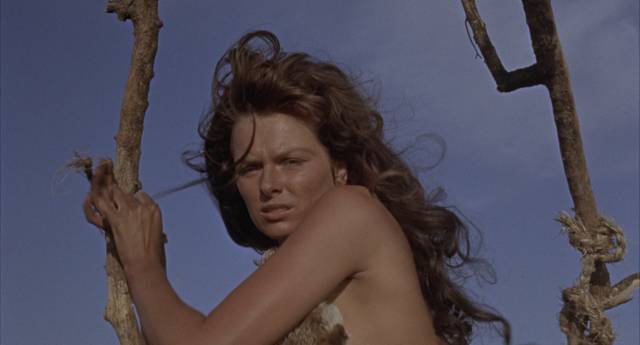
Creatures the World Forgot (Don Chaffey, 1971)
Speaking of Indicator – it appears that they have abandoned their series of Hammer box sets after six releases each containing four features. Now they appear to be aiming for individual releases – just out are the studio’s two Robin Hood features, but the initial release, strangely, is Don Chaffey’s Creatures the World Forgot (1971), no one’s idea of a Hammer high point. More Master of the World (1983) than Quest for Fire (1981), Creatures attempts a kind of anthropological treatment of stone age life, largely because Hammer didn’t want to get bogged down again with the time-consuming (and budget-straining) stop-motion effects required for pitting cavemen against dinosaurs.
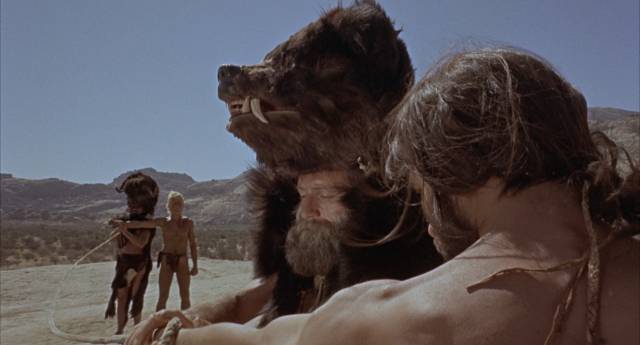
Avoiding the made-up languages of Chaffey’s One Million Years B.C. (1966) and Val Guest’s When Dinosaurs Ruled the Earth (1970), the actors in Creatures are reduced to grunting and pointing to express themselves. Chaffey uses a lot of hand-held camerawork to give proceedings a pseudo-documentary feel, and there are moments of what appear to be real violence to animals, but the movie just can’t avoid the air of silliness inherent to the genre.
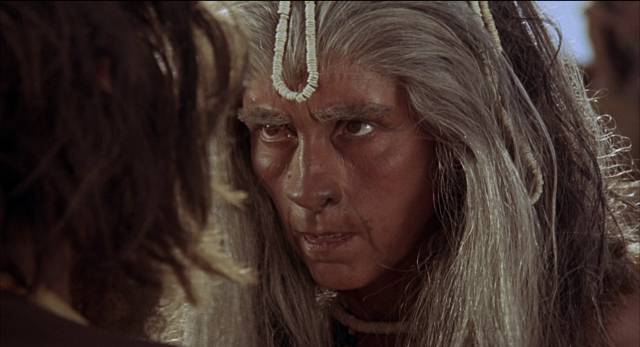
With everyone wearing ragged animal hides, with tangled hair and dirt-caked skin, the lack of any kind of dialogue often makes it hard to tell characters apart. This is further complicated by a thin narrative which stretches across decades. One character is given a scar at birth which helps us to track him into adulthood, but relationships are confusing. It all has something to do with the twin sons of a tribal chieftain, one good, one bad, who grow up as rivals for leadership and, of course, for a skimpily-clad cavewoman (former Miss Norway and Penthouse Pet Julie Ege, whom Hammer was promoting as the decade’s next big sex symbol).
There are animal attacks, battles between tribes, unconvincing miniature volcanoes, and brutish fights. But while Michael Carreras’ script is dull and uninvolving, technical aspects aren’t without value, particularly the cinematography of Vincent Cox, who makes the most of the arid South African locations, and Mario Nascimbene’s quite experimental score. The most entertaining thing in the movie is the tribe’s shaman, played to the hilt by veteran character actor Rosalie Crutchley, who commits herself fully to the nonsense.
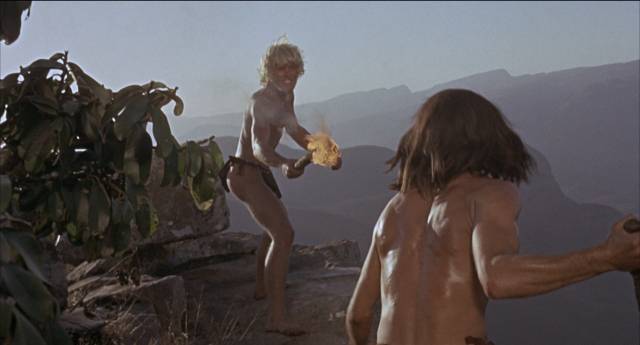
Despite the minor status of the feature itself, Indicator have loaded the disk with extras, beginning with a commentary from Kim Newman and Sean Hogan and a 25-minute talk from Jonathan Rigby about the place of the movie among Hammer’s attempts to change with the times. David Huckvale provides another informative analysis of the music, and Rachel Knightly sketches Julie Ege’s career. Most substantially, three Children’s Film Foundation movies directed by Chaffey are included: Skid Kids (1953, 48:39), about kids who race bikes on improvised tracks in areas still showing damage from the war, and A Good Pull-Up (1953, 17:31) and Watch Out (also 1953, 17:56), both starring comedian Peter Butterworth as a character named Dickie Duffle in an attempt to recapture the feel of silent slapstick comedies – personally, I found them both pretty strained rather than amusing.
I might have liked this release better if It had been embedded in another four-movie box set. Without that additional context it seems like a puzzling choice on which to lavish so much attention.
Comments